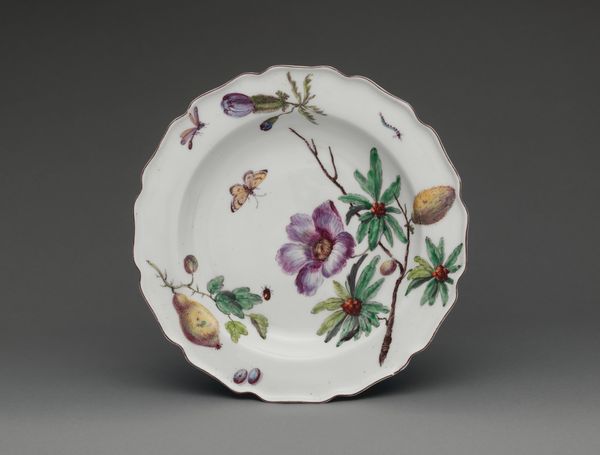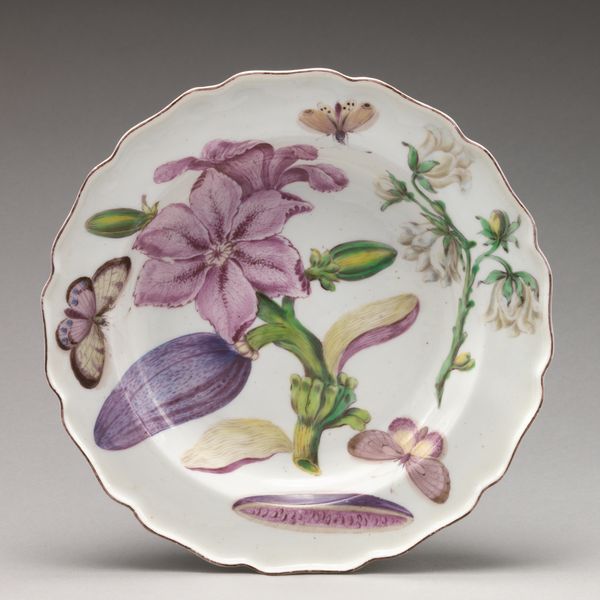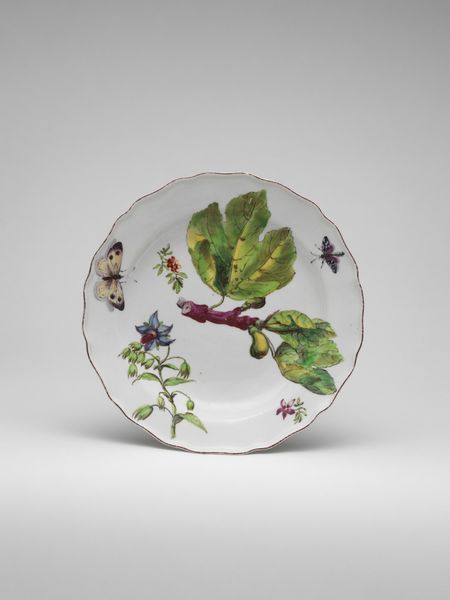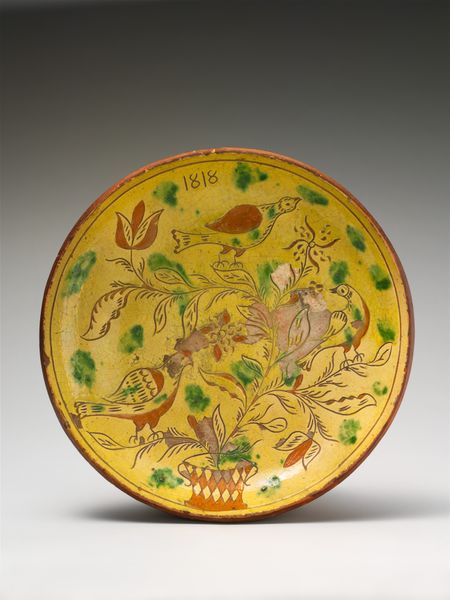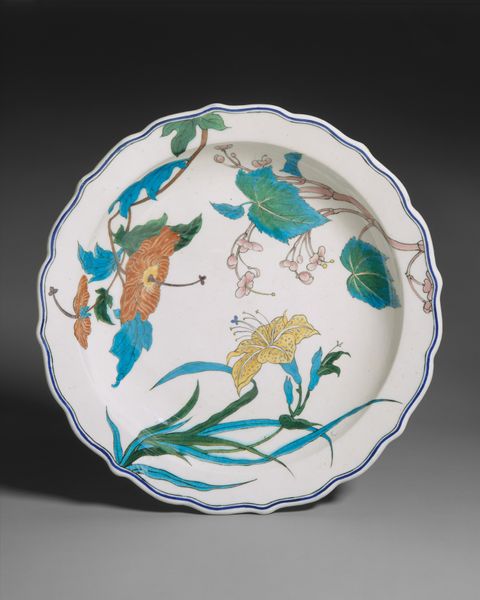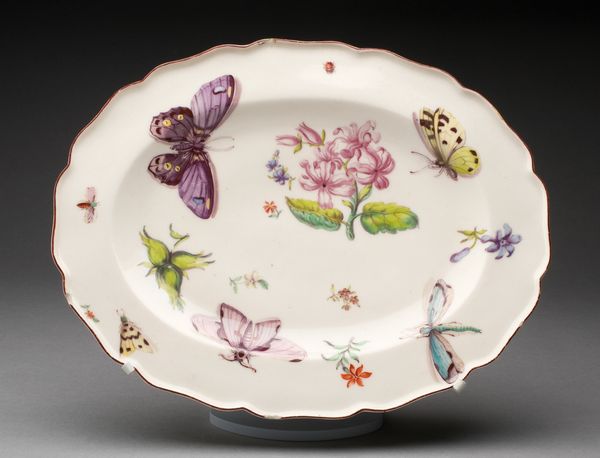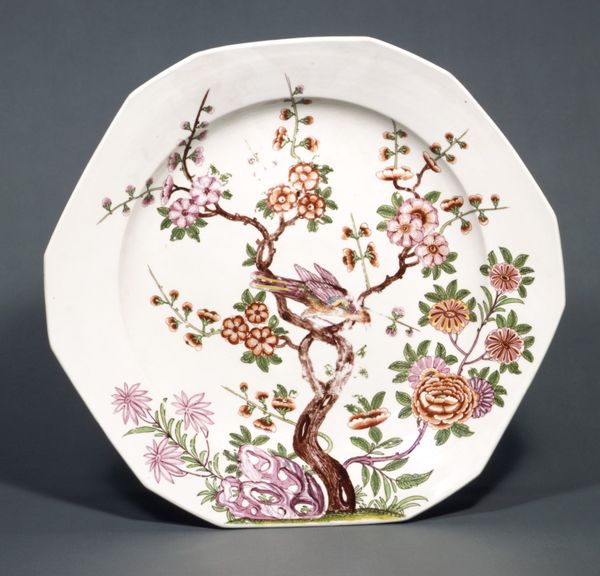
Botanical plate with fruiting branch 1750 - 1760
0:00
0:00
painting, ceramic, porcelain, sculpture
#
painting
#
ceramic
#
porcelain
#
sculpture
#
ceramic
#
decorative-art
#
rococo
Dimensions: Overall (confirmed): 1 9/16 × 9 1/8 × 9 1/8 in., 1 lb. (4 × 23.2 × 23.2 cm, 0.5 kg)
Copyright: Public Domain
Curator: I must say, there’s something so effortlessly charming about this piece. It’s called "Botanical plate with fruiting branch", made sometime between 1750 and 1760 by the Chelsea Porcelain Manufactory. Editor: Yes, a rather lighthearted aesthetic, wouldn’t you agree? I sense a certain…optimism radiating from the glossy surface. The crisp white of the plate allows the meticulously detailed branch and those delightfully rendered butterflies to truly take flight. Curator: Absolutely! There's a beautiful sense of movement here. Those butterflies add a touch of whimsy; they seem poised to flutter right off the plate! One almost anticipates a gentle breeze. Editor: The butterflies provide dynamism but let’s not overlook the Rococo flair: notice the intricate, undulating edge, highlighted by a thin brown band; a quintessential framing device. The composition leads my eye systematically, and the colors contrast and then settle gently. Curator: True. And, of course, the very material speaks to its purpose, no? Porcelain offers a unique smoothness. This porcelain lends itself so well to the delicate nature of the painted subject. You just want to…hold it! Editor: Agreed. Tactility becomes a form of interpreting it. The material’s visual identity interacts cleverly with the botanical subject; nature rendered upon nature, if you will. This type of close visual observation enhances our relationship with an object. Curator: It's funny how the functional merges with the aesthetic here, too, isn't it? Can you imagine sipping tea with this plate on your lap, momentarily suspended in a miniature pastoral scene? Editor: Indeed. Form perfectly meeting function through visual appeal. Such design represents the philosophical ambitions of the time, a certain kind of Enlightenment. Curator: In the end, what draws me to this botanical plate is how it captures a specific time's sensibility – an embrace of nature, luxury, and a touch of fanciful escapism. It speaks to a deep joy in observing the world around us, even in our everyday objects. Editor: Yes, and such artifacts remind us of the complex networks between art, philosophy, and design. When such systems come together so organically, it’s not merely an aesthetic piece, but an articulation of broader thought systems and periods.
Comments
No comments
Be the first to comment and join the conversation on the ultimate creative platform.


